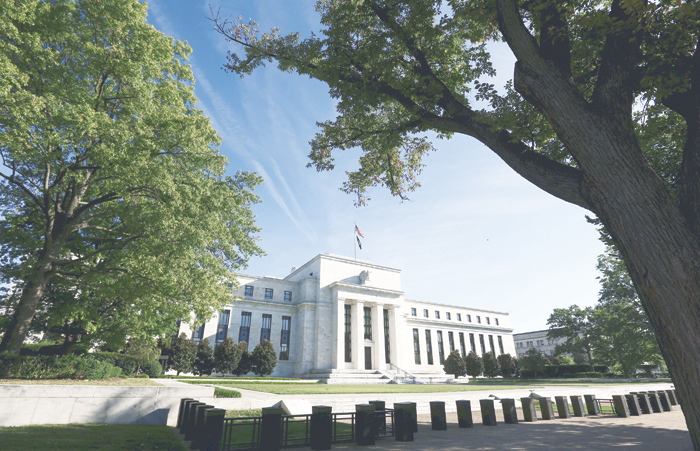

NEW YORK/SAN FRANCISCO: The US Federal Reserve is set on Wednesday to announce the start of a plan to trim its $4.5-trillion portfolio of assets, much of it amassed in response to the 2007-2009 financial collapse, marking another milestone in bringing to an end the crisis-era measures.
If Fed Chair Janet Yellen gets her way, financial markets that had swung wildly with past shifts to the policy will barely shrug when the asset reduction begins, probably in October.
The plan is for the Fed to stop buying bonds so gradually that it will take years for its holdings to shrink to $3 trillion, around where some policymakers and economists estimate it will settle.
The Fed’s asset holdings stood at about $900 billion in mid-2008, before it began buying bonds to spur hiring and economic growth.
Years of planning and months of careful public messaging should make the asset-unwinding process about as riveting as “watching paint dry,” according to Reserve Bank of Philadelphia President Patrick Harker.
The US central bank is expected to leave interest rates unchanged at its September 19-20 policy meeting, according to a Reuters poll of nearly 100 economists, with markets pricing in a 52 per cent chance of a rate hike coming at a December meeting.
The Fed will also release a fresh round of projections on Wednesday, laying out policymakers’ own expectations for rate hikes ahead.
LEADING OTHER CENTRAL BANKS: With the US economy growing fast enough to keep unemployment well below half its recession-era peak, the Fed is poised to be the first major central bank to begin pulling back from the final stage of emergency measures post-2008.
Under Yellen, the Fed has raised interest rates four times from near zero and stopped accumulating assets. The next stage is not to sell holdings but to halt the reinvestment of proceeds from maturing bonds.
Thanks to synchronized global growth and still-easy financial conditions, the Fed looks able to avoid past shocks, most notably the so-called “taper tantrum” in 2013 that rocked markets worldwide and spiked bond yields when then-Fed Chairman Ben Bernanke suggested the purchases could soon be reduced, or tapered.
“The market is going to be very sensitive to what’s going on here,” Peter Hooper, a former Fed economist who is now chief economist at Deutsche Bank Securities, said earlier this month.
“But we no longer need all this extraordinary monetary easing that we have seen since the crisis, so it’s time to do so.”
The Fed’s counterparts in Frankfurt and Tokyo will be among those watching the process most closely, given the potential ripple effects on their markets and economies, and the lessons to be learned from the US experiment.
Combined, the three central banks hold some $15 trillion in assets, purchases that were meant to encourage riskier investing but that critics say may be distorting financial conditions. — Reuters
Oman Observer is now on the WhatsApp channel. Click here



